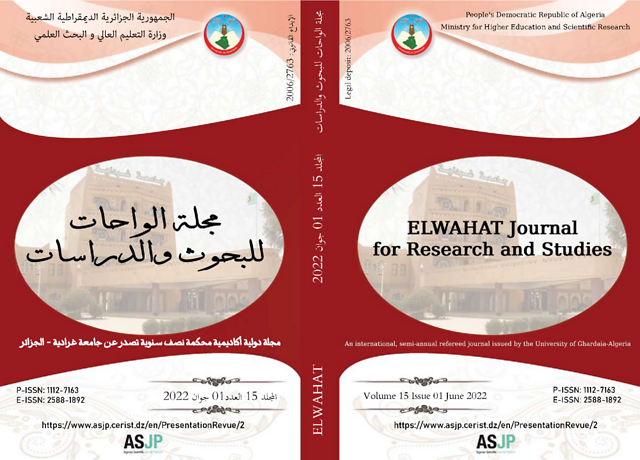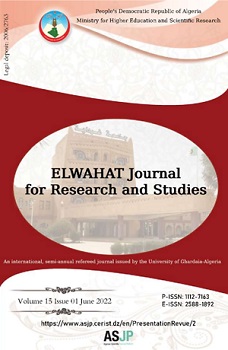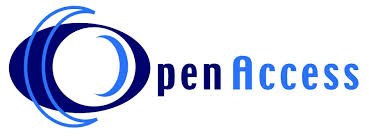The Effect of Blended Instruction on Oral Expression Classes
Abstract
ABSTRACT:
In the main, language teachers’ target is to productively tackle the four language skills: listening, speaking, reading, and writing. The essential focus in teaching oral expression for EFL settings is principally the receptive and productive skills. Language teachers need to take into consideration the improvement of their learners’ aptitudes to listen, understand, and speak the target language. Nowadays, this focus needs to be adapted in a blended instruction after The Covid 19 health calamity. For that reason, the main objective of this work is to investigate the effect of blended instruction on Oral Expression courses in developing as well as improving the teachers’ lesson plans, objectives, and achievements. To conduct our study, we constructed a questionnaire for ten Oral Expression teachers at the Department of Letters and English at the University of ‘Kasdi Merbah’, Ouargla ; aiming at unveiling their attitudes about the efficiency of the blended instruction and their approach to implement along with develop the students’ speaking and listening skills. With reference to the gathered results from the teachers’ questionnaire, we conclude that there is reason to judge the positive efficiency of blended instruction in facilitating and improving the quality of oral expression classes.
KEYWORDS: Blended Instruction, Teaching Oral Expression, Speaking skills, Listening Skills
ملخص:
على الأغلب، هدف معلّمي اللغة هو معالجة المهارات اللغوية الأربع: الاستماع، التحدث، القراءة والكتابة بشكل فعال. التركيز الأساسي في تدريس التعبير الشفهي لإعدادات اللغة الإنجليزية كلغة أجنبية هو بشكل أساسي على المهارات الاستيعابية والإنتاجية. يحتاج معلمو اللغة إلى مراعاة تحسين قدرات الطلبة للاستماع إلى اللغة المستهدفة، فهمها والتحدث بها. في الوقت الحاضر بعد الكارثة الصحية كورونا ، يجب تكييف هذا التركيز عن طريق إدماج التعليم الحضوري والتعليم عبر الإنترنت، فإن الهدف الرئيسي من هذا العمل هو التحقيق في تأثير التعليمات المختلطة على أقسام التعبير الشفوي في تطوير وتحسين خطط دروس المعلمين وأهدافهم وإنجازاتهم. لإجراء دراستنا ، قمنا ببناء استبيان لعشرة مدرسين للتعبير الشفهي في قسم الآداب واللغة الإنجليزية بجامعة "قصدي مرباح" بورقلة ؛ بهدف الكشف عن مواقفهم حول كفاءة التعليم المدمج ونهجهم في التنفيذ جنبًا إلى جنب مع تطوير مهارات التحدث والاستماع لدى الطلاب. بالإشارة إلى النتائج التي تم جمعها من استبيان المعلمين ، نستنتج أن هناك سببًا للحكم على الكفاءة الإيجابية للتعليم المختلط في تسهيل وتحسين جودة فصول التعبير الشفوي.
كلمات دالة: التدريس المختلط، تعليم التعبير الشفهي ، مهارات التحدث ، مهارات الاستماع.
References
Books:
- Allwright, R. L. The importance of interaction in classroom language learning. Applied linguistics. (1984).
- Baker. A. Improve Your Communication Skills (4th Ed.). United States: Kogan Page Limited. (2000).
- Bushweller, K. Navigating the path to personalized education. Education Week, 30(25), (2011).
- Bygate, M. Speaking. Oxford: Oxford University Press. (1987).
- McLean, A. C. Destroying the teacher: The need for learner-centered teaching. English Teaching Forum, 50(1), (2012).
- Scrivener, J. A guidebook for English language teachers. Macmillan Education. (2005).
- Walsh, S. Construction or obstruction: Teacher talk and learner involvement in the EFL classroom. Language teaching research, 6(1), (2002).
- Ur, P. A course in English language teaching. Cambridge: Cambridge University Press. (2012).
- Journal article:
- Bergmann, J., & Sams, A. Flipping for mastery. Educational Leadership, 71(4). (2014).
- Roehl, A., Reddy, S. L., & Shannon, G. J. The flipped classroom: An opportunity to engage millennial students through active learning strategies. Journal of Family & consumer Sciences, 105(2). (2013).
- Nunan, D. Language teaching methodology (Vol. 192). New York: Prentice Hall. (1991).
- Sen, P. The Criterion: An International Journal in English. Web. (2013).
- Osada, N. Listening comprehension research: A brief review of the past thirty, years. Dialogue, 3(1), (2004).
- Roehl, A., Reddy, S. L., & Shannon, G. J. The flipped classroom: An opportunity to engage millennial students through active learning strategies. Journal of Family & consumer Sciences, 105(2), (2013)
- Hamdan, N, McKnight, P., McKnight, K, & Arfstrom, K. M. A review of flipped learning. classroom.” Journal of College Science Teaching, 42(5). (2013.
Seminar article:
author’s name , full title of the paper, title of seminar, country ,place and date.
- Nolan, M. A., & Washington, S. S. Flipped out: Successful strategies for improving student engagement. Paper presented at Virginia Tech’s Conference on Higher Education Pedagogy, Blacksburg, VA. (2013).
Internet websites:
Meddour, Mustapha. The Role of laboratory-Based Language Teaching in Developing Students’ Aural Oral Skills.Biskra University, 2006. -http://www.monografias.com.
- Mull B. Flipped learning: A response to five common criticisms. Retrieved from November Learning (2012), consulted 21 April, 2015.http://novemberlearning.com/resources/articles/flippedlearning-a-response-to-five- commoncriticisms-






